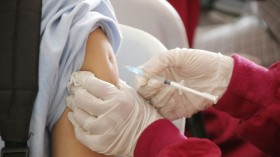Scientists have engineered synthetic blood vessels in hopes of treating children born with serious heart defects. The artificial blood vessels, which could grow with age, could eventually eliminate the need for multiple surgeries in children.
"A child might have five open heart surgeries for these conduits to be resized as they grow, and that can mean incredible anguish for the patient and family," Robert Tranquillo from the University of Minnesota and research leader, said in a statement.
According to Tranquillo, children with heart defects may need surgery to replace the blood vessels, but the reconstructed vessels that are being used in these types of surgeries are made of materials that do not grow as the child grows. As a result, child patients would have to undergo up to seven surgeries to get bigger replacements for their blood vessels, Live Science reports.
This is the problem the researchers wanted to address. In creating the material, the scientists first placed living cells called fibroblasts into a special tube, then pumped nutrients into the fluid around the cells, which would allow the cells to grow. The cells eventually took on the shape of the tube, and through the pumping the cells stretched and deposited proteins into their surroundings. These proteins will serve as the building blocks of the vessels.
Before implanting the synthetic blood vessels, they were washed in a detergent to remove all the living cells. By removing the cells, the researchers hoped that the blood vessel grafts would not be recognized as foreign bodies and would not be rejected by the patient's immune system.
The researchers then implanted the lab-made blood vessels in three five-week-old lambs to replace the blood vessels that connect the heart to the lungs. Through ultrasound images, the researchers found that the artificial blood vessels grew as the animals aged.
"The amazing thing is that the recipient lamb cells repopulate our matrix and it physically grows," Tranquillo said in an interview with The Guardian. "There are many suggestions that we are getting normal growth."
While the results in lamb experiments were promising, Tranquillo said that further studies are needed to determine whether the vessels could be used in humans.
The research results are detailed in a paper published in the journal Nature Communications.
© 2024 NatureWorldNews.com All rights reserved. Do not reproduce without permission.





